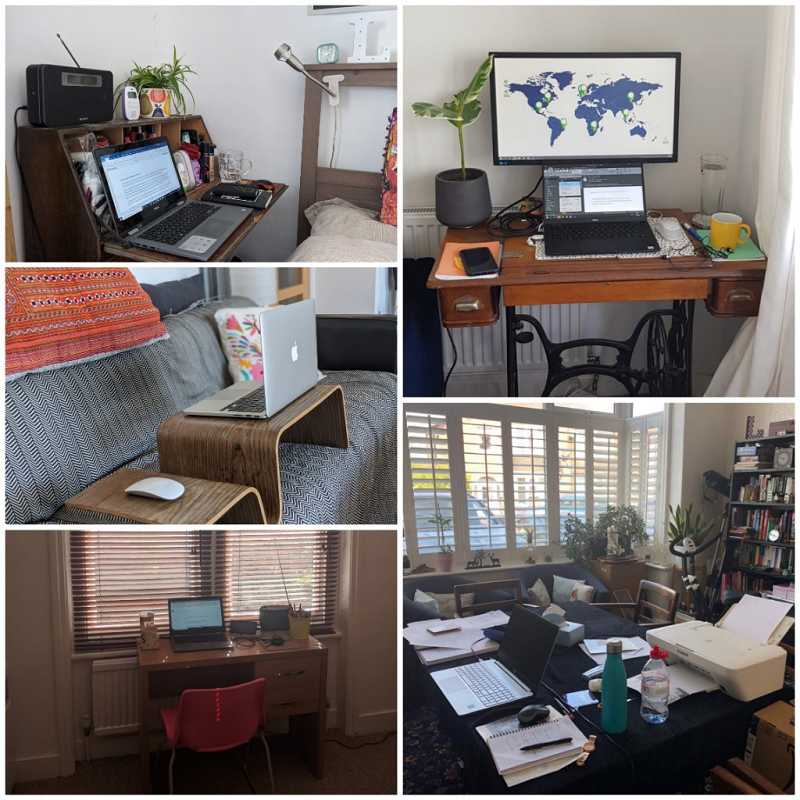Home is where everything is
Up and down the country, kitchen tables are being turned into schools, bedrooms into offices, and living rooms into gyms. Never have our homes had to stretch and flex like right now.
While this much time at home may be new to many people, for others it is very much business as usual. Older people who find getting out and about difficult; people with certain health conditions who may have to stay in for weeks, months, even years at a time to look after their health; carers; people on parental leave; and stay-at home parents.
Throughout our lives, we may all need to spend periods at home as our circumstances and abilities ebb and flow. But as we all now try to live, learn, and work in place, long-existing challenges in our housing stock are being thrown into stark relief.
Here are a few examples from a quick poll:
Space. You can’t have too much.
A separate workspace where you can focus when you need to, then switch off and relax at the end of the day isn’t just important for mental well-being. There are also lots of practical considerations around removing yourself from noise and distraction. Setting up in the kitchen means constant interruption from other members of your household, the washing machine whirring away all day, or constant temptation to eat that biscuit or wash up those dishes. People who share with flatmates may have no choice but to squeeze the ‘office’ into their bedrooms. Cars are even being used as quiet spaces away from the kids. In my household, the living space is pretty small and open-plan, so Zoom calls are all joined by our 6-month old, it’s truly intergenerational!
Ease of access to essential facilities.
Particularly plug sockets. Vaulting the furniture to reach the one overloaded socket deep behind the sofa is not safe or helpful. The strength of Wi-Fi can really limit where you can set up shop too.
Light, temperature and ventilation.
These all play a big part in our comfort and productivity throughout the day. Windows behind or to the side can create unhelpful screen reflections or shadows. You might spend your day moving throughout your home to chase or escape the sun or track down fresh air. Some parts of your home may not get any daylight at all. We’ve had to invest in special bulbs so it doesn’t feel like we’re working in perpetual darkness. Gardens and balconies have never been so coveted.
Supportive seating and adjustable height furniture.
Sewing tables, breakfast bars and dressing tables are all being repurposed into makeshift desks. Even ironing boards! Likewise, yoga balls and armchairs are doubling up as office chairs. While working from bed or the sofa with your tiny laptop may sound idyllic for the first week, by week two the crick in the neck has really set in. Some workplaces are allowing people to take home their office chairs and large screens, or providing budget to buy new ones. But not everyone has such enlightened employers or the space to do this.

The common thread here is people ‘hacking’ their homes and finding solutions that just about do in their space. While people’s ingenuity in the face of adversity is pretty impressive, these ‘hacks’ are often at the expense of health and well-being.
Working with older people I know this is kind of ‘hacking’ and making do is the everyday reality for many people, long before the Coronavirus was added to the mix, so they can stay in their homes independently.
The answer to all this is more inclusively designed, future-proofed homes. If more of our homes were built with a strong foundation of accessibility and decent space standards (opens new window), then it would be much less stressful to quickly adapt our homes to whatever life throws at us: having kids, getting older, injury and illness, even a global pandemic…
It is why the HAPPI principles (10 key design principles for age-friendly housing) have been so easily adapted into 10 principles for a work-friendly home in lockdown. Enough space around a bed for a wheelchair is also enough for a desk. Higher plug sockets that you don’t have to bend down to reach are useful whether your laptop needs power or you have arthritis. Task lighting helps people with visual impairments as well as computer work. Taps, flushes and door handles that can be operated by elbow or automatically reduce cross-infection but are also better for people with reduced dexterity or mobility. Wide, level access doors allow for socially-distanced deliveries but also people using crutches, rollators and prams. Access to fresh air makes us all feel better. I could go on and on. For a full list of future-proof features, check out HAPPI principles. They offer a fab blueprint for what housing of the future should look like.
As Covid-19 has revealed, no one is immune from having to spend long periods in their homes. When lockdown is lifted, let’s hope that we start building more homes ready and able to support us through this whole strange and wonderful, twisting and turning life of ours.
This Housing LIN blog is part of a new series stimulated by the Housing LIN’s Jeremy Porteus thoughts on preparing for ‘work ready’ housing and adapting the HAPPI design principle for work readiness (referenced in this article).
If you found Laura’s blog of interest, read her earlier Housing LIN viewpoint, The challenge for designers to show that the most sensible housing for older people can also be the most desirable.
Laura Wigzell runs The Pretty Good Project (opens new window), which brings the experiences of older people into the design process to create better, more inclusive design for us all.

Comments
Add your comment